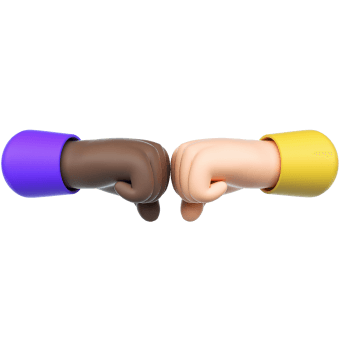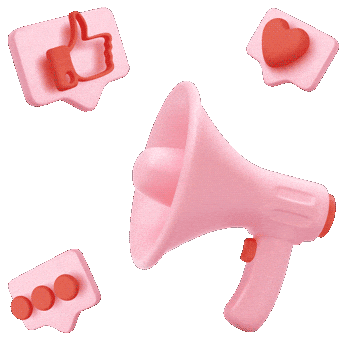Selling without selling: how content triggers work

A very important step in content presentation is adding a trigger. A trigger is a generalized behavior model that works for most people. Darya Bolgarinova, a Russian Yandex.Zen blogger, tells how triggers can help bloggers and publishers sell goods and services using content.
Back in the 1960s, American marketers who studied user behavior asked themselves, “What to do to make people buy more?” The researchers noticed that people are prone to follow specific models and scenarios in their behavior. Eventually, these models and scenarios were named “triggers” and we will talk about them today.
Author: blogger Darya Bolgarinova
What triggers are
Triggers are mental stimulators that affect a person subconsciously and prompt them to act in a specific way. Using content, we pulled a string and the person responded. But a trigger cannot be considered manipulation: this is just profound understanding of how people behave and mentally react.
Let’s talk about regularities and laws you can take advantage of when designing your content to urge your audience to buy products, ideas, and services faster and easier. These stimuli produce a subconscious effect and lead to decision-making. The trigger concept with work both for CPA marketers and online store owners. Basically, this philosophy can come in handy for everyone concerned with selling.
Different people react to different triggers. For one, some can get hooked by the word “SALE” on the storefront. Such consumers are likely to drop in for a minute but wind up holding full, weighty bags. Others are triggered by the word “VIP” as they see it as premium-grade service.
Triggers don’t affect every person in the same way. And your goal is to infuse as many triggers into your content as you can so they hook various “layers” of your target audience. Why would one person read a post and made a purchase and the other just closed the page after they finished reading? Just because the former perceived the trigger and the latter missed it: the trigger did not work for them. But, with this in mind, you will be able to embed a trigger that will strike a chord in that person, in your next post.
Triggers are not about acquiring customers. Those are about converting a lead — an interested person who fits in your target audience — into a real customer. Those are about selling without selling: only using content.
There are lots of triggers. Let’s look into some of them.
Reciprocity
This trigger is based on feeling obliged. It’s also called the norm of reciprocity. For instance, if someone pays for you in a restaurant, you usually say that your next dinner together is on you. When someone benefits you, your subconscious suggests that you thank them.
If you provide helpful content for free, the audience will want to thank you with likes, shares, and/or comments, being more motivated to purchase products or services you promote.
When helpful content mentions a product that one can buy, people do it right away. Moreover, they recommend the product to other people: they regard it as something cool, relevant, and useful, and you as a professional.
How to enable this trigger
- Deliver more helpful and relevant content. When people get valuable information from you, the principle actuates. People learn something important, apply the insights, and see their life get better (even if you made them laugh for a few seconds). Subconsciously, people realize you helped them and thus they owe you — a like, comment, or reference.
- You can address your help to specific questions that bother people. For instance, gather together all people’s questions before a webinar or in the comments to a post, and answer them verbally or in writing. Eventually, every question’s author will think, “Wow! I got noticed! Thanks!” People even write testimonial posts to respond to such interaction.
Also, if your users leave comments, don’t forget to thank them, reply to them, and like them. Stay in contact.
- Don’t sell. If a person sees a value and finds no attempts to sell something to them, there are much higher chances they will be interested in your content—and will agree with you and confirm relevance of the subject. A bit later, they will start buying.
Sure, don’t wait that everyone will thank you for what you give. Most users are used to consuming and giving nothing in return. This is how our life works. There will be users who will think you and your products don’t suit them. No worries. There will be people who will like you and get caught by your trigger.
BIG reason why
Some do business for business. But some do business to be helpful. Ask yourself, “Why do I do what I do?” Elevate from the level “I’m selling to earn” to the level “I provide benefit to make the world better.”
Assume you sell underwear or swimming suits. You can regard it as either selling of bras and panties or something bigger. Gorgeous underwear can enhance romantic relations, return passion and desire, and recover reciprocal understanding. For women, underwear is always a tool to activate sexuality. And this will be your mission, a BIG reason why you sell what you sell.
So you will sell with this mission in mind. For instance, publish texts with underwear selections for various images: “tender pussycat”, “wildcat”, “femme fatale” — describing every image and how it can affect personality and inner feelings. Emphasize that the customer will get much more than just a product.
Involvement into ownership
Your audience may not know you work for them. People may be unaware that your product suits them or be misled by common misbeliefs or stereotypes. For one, they may think your product is only for people that are wealthier, poorer, younger, etc.
Real-life example. You pass by a glorious storefront. What do you think of first? “The place must be pricey.” But, if you walked in and checked out the assortment and prices, you could have a real picture of whether the prices are that high, whether the price-quality ratio is well-balanced, whether there are styles that you might like.
The main goal is to free a user from stereotypes and thinking your product is not for them. Another point to consider. People don’t buy a product if they can’t figure out how it works and how it can help them. Your task is to demonstrate the value and relevance of your product or service — using the trigger “Involvement into ownership.”
Let the audience try a product or a service here and now. Help them give it a try! A good example of this trigger is a car test drive or food tasting. This is why manufacturers often invite bloggers to test new items. This is what Russian railways company RZD held a blog tour on its new retro train Sochi. The participants delved into the atmosphere of a train voyage, tried food in the restaurant car, felt acutely the beauty of the route, and eventually communicated their experience to their audience through content.
You can achieve this by means of text or, more effectively, video content. For instance, compose a first-person text or shoot a video. Tell in detail how the main character got — and used — the product. And, most importantly, what they felt and how the product helped them. Let the reader immerse into owning a product through text or another form of content. This way you can make the customer’s desire closer to turning into reality — so they feel themselves owning the product and don’t want to disengage themselves from it.
Then, the person responds: they naturally realize they have to pay to make the desire — the feeling of owning a product, improving their life — come true. This is how you spur a person into action.
Anticipation
There is a sound reason why Apple announces a new product a few months before it’s actually rolled out. It’s all about triggering. In the Apple case, the trigger helps warm up the audience, excite people that pursue new things and experiences, and tell much about the upcoming product before it materializes. Sure, it works best if the potential customers look forward to seeing the product and they love it. But, even if you tell about a new product for the first time, you may want to unveil some facts beforehand rather than introducing it on the release day.
Example. You wrote a book. It already rests on bookstore shelves and you only tell your friend, “I’ve published a book!” The only reaction you will see is a surprise: no interest. However, if you tell your friend you’re writing a book, the question will be, “What will it be about?” Your friend will know what you’re working on and, theoretically, share the insight with their friends. Eventually, by the moment of publishing, you will have a warm audience interested in purchasing in reading your intellectual product.
This is how “Opening soon” signs and posters work. When the buzz is in its full strength, you can announce the exact date of opening.
The same works for blogs. For instance, end every post with an announcement of the future ones. Alternatively, tell about an upcoming purchase and unpackaging that you will publish. Following this logic, it’s a bad idea to write about Christmas on December 25. The safest way is to publish such posts when the pre-holiday fuss is in full play.
Greed
We love discounts! And what we love most is discounts on pricey products we’ve been dreaming of.
The biggest pleasure is to buy something ordinary (e.g. groceries, household products, etc.) and get a big discount with a coupon code. Deals like “2 for 1”, “1+1=3” follow the same paradigm. There are lots of social media groups and chats that only publish discounts and deals for various products and services. And those are quite popular.
As rude as it may sound, it’s greed and passion for saving that prompt the audience to purchase and participate in draws, contests, and deals, get bonuses and prizes. Bloggers are recommended to apply this trigger in at least two ways. First, those are promo codes for the discounts that advertisers provide.
For instance, a user can get them when connecting to a program in the catalog, in the Coupons and Deals section.
Alternatively, you can offer your prizes and gifts for shares on social media, subscriptions, and inviting friends to a group or blog.
We’ve given examples for just several triggers. In fact, there are over 30 mental triggers. One can apply virtually any marketing trigger (e.g. Engagement, Exclusiveness, Surprise, Community) when creating content (text, video, or images).
We wish you great sales!







